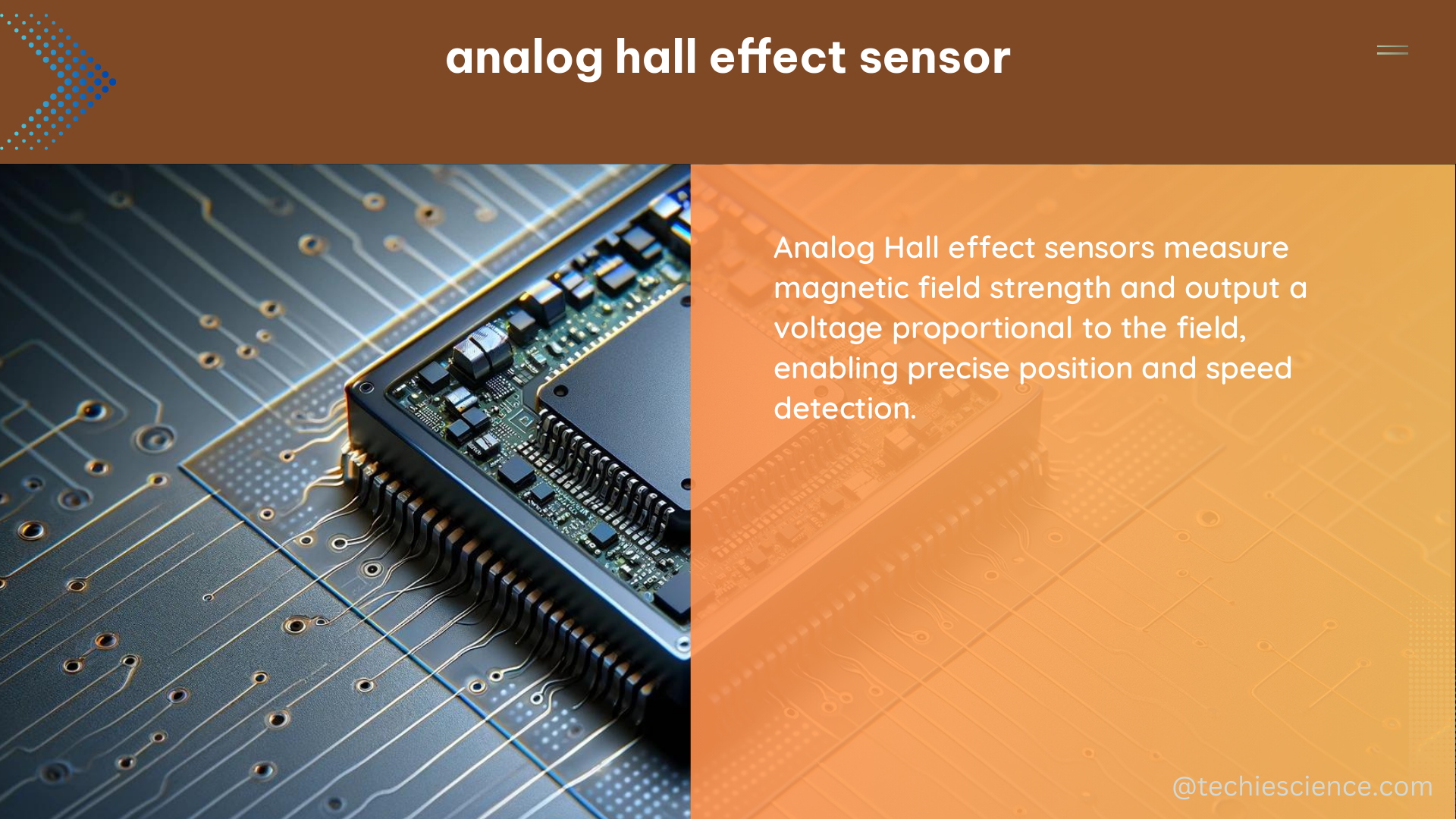An analog Hall effect sensor is a versatile device that generates a voltage output proportional to the magnetic field it is exposed to. These sensors are widely used in various applications, from current sensing and position detection to speed and flow measurement. In this comprehensive guide, we will delve into the technical specifications, practical considerations, and DIY applications of analog Hall effect sensors, providing you with a detailed understanding to help you navigate the world of magnetic field sensing.
Understanding Analog Hall Effect Sensors
The working principle of an analog Hall effect sensor is based on the Hall effect, which was discovered by Edwin Hall in 1879. When a current-carrying conductor is placed in a magnetic field, a voltage is generated perpendicular to both the current and the magnetic field. This voltage, known as the Hall voltage, is proportional to the strength of the magnetic field and the current flowing through the conductor.
Analog Hall effect sensors, such as the TMCS1100 from Texas Instruments, leverage this principle to provide a voltage output that varies linearly with the applied magnetic field. The sensitivity of these sensors is typically defined as the output voltage per unit of magnetic field, and it is factory-calibrated to ensure accurate and reliable measurements.
Technical Specifications of Analog Hall Effect Sensors

The TMCS1100 is a high-precision, basic isolation Hall-effect current sensor with a sensitivity of 1% to the magnetic field. Let’s dive into the key technical specifications of this sensor:
Resistance and Temperature Coefficient
- Nominal resistance: 1.8 mΩ at 25°C
- Typical positive temperature coefficient: As defined in the Electrical Characteristics table
Isolation
- Input isolation: 1500 Vrms (minimum) and 3000 Vrms (maximum) between the input conductor and the Hall sensor die
Offset Error
- Offset error: The deviation from the ideal output voltage with zero input current through the device
- Can be referred to the output as a voltage error (VOE) or the input as a current offset error (IOS)
- Output voltage offset error of the TMCS1100: The error in the zero current output voltage from the VREF pin voltage, as defined in Equation 3 of the datasheet
Sensitivity and Output Voltage
- Sensitivity: The output voltage per unit of magnetic field, factory-calibrated to provide a final sensitivity value
- Output voltage: Proportional to the input current by the device sensitivity, as defined in Equation 11 of the datasheet
DIY with Analog Hall Effect Sensors
When working with analog Hall effect sensors, such as the HHP-SU 696, there are several practical considerations to keep in mind:
Calibration
Calibration is a crucial step in ensuring accurate and reliable measurements. By calibrating the sensor, you can compensate for any offsets or variations in the sensor’s output.
Smoothing and Filtering
The raw analog value returned by the Hall sensor can sometimes appear jumpy or unstable. To address this, you can use a smoothing function to take multiple readings and compute the running average. This can help stabilize the output and provide a more consistent value.
For example, with the HHP-SU 696 Hall sensor, you can use a smoothing function to take 500 readings and compute the running average. The final value can then be used as the analog value.
If the raw analog value is still too jumpy, you may need to apply further smoothing or filtering. The smoothing function used in the Arduino forum post can be a good starting point, but you may need to adjust it based on the specific requirements of your application.
Adjusting the Smoothing Function
The effectiveness of the smoothing function can depend on the specific characteristics of your Hall sensor and the application requirements. It’s important to experiment with different smoothing techniques and adjust the parameters to find the optimal balance between responsiveness and stability.
Some factors to consider when adjusting the smoothing function include the sampling rate, the number of readings to average, and the weighting of the most recent readings. You may also need to experiment with different filtering algorithms, such as moving average, exponential smoothing, or Kalman filtering, to find the best fit for your application.
Conclusion
Analog Hall effect sensors are powerful tools for a wide range of applications, from current sensing to position detection. By understanding the technical specifications, practical considerations, and DIY techniques, you can unlock the full potential of these sensors and create innovative projects that leverage the power of magnetic field sensing.
Remember, the key to success with analog Hall effect sensors lies in careful calibration, effective smoothing and filtering, and a deep understanding of the specific requirements of your application. With this comprehensive guide, you’re well on your way to becoming a DIY expert in the world of analog Hall effect sensors.
References
- Hall Effect Measurement Handbook – Quantum Design
- TMCS1100 1% High-Precision, Basic Isolation Hall-Effect Current Sensor Datasheet – Texas Instruments
- Filter/smooth analog output from a Hall Sensor – Arduino Forum

The lambdageeks.com Core SME Team is a group of experienced subject matter experts from diverse scientific and technical fields including Physics, Chemistry, Technology,Electronics & Electrical Engineering, Automotive, Mechanical Engineering. Our team collaborates to create high-quality, well-researched articles on a wide range of science and technology topics for the lambdageeks.com website.
All Our Senior SME are having more than 7 Years of experience in the respective fields . They are either Working Industry Professionals or assocaited With different Universities. Refer Our Authors Page to get to know About our Core SMEs.